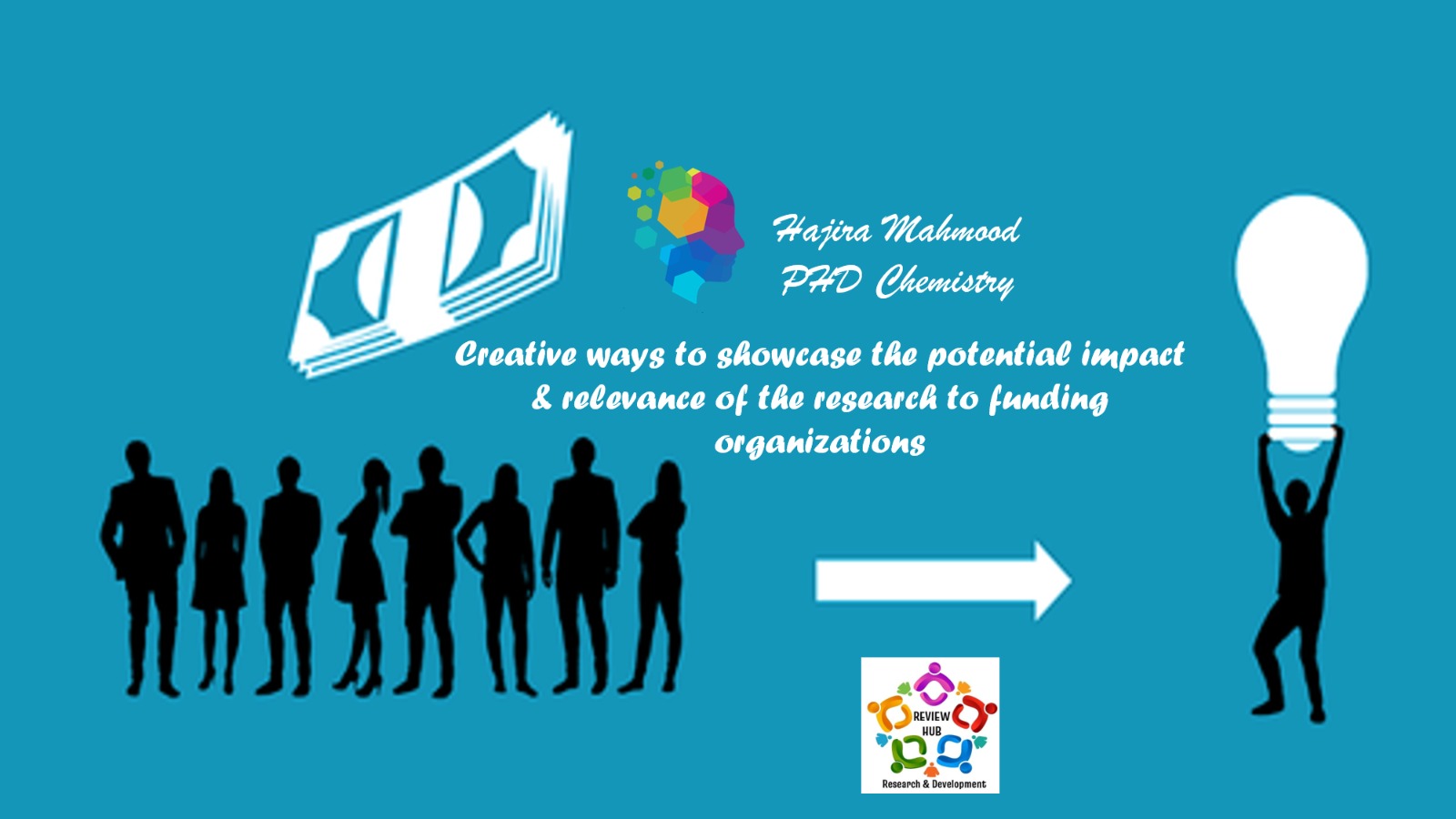Creative Ways to Showcase the Potential Impact & Relevance of their Research to Funding Organizations. Researchers can employ various creative ways to showcase the potential impact and relevance of their research to funding organizations. By employing these creative approaches, researchers can effectively convey the potential impact and relevance of their research to funding organizations, increasing their chances of securing funding for their projects.
Author: Hajira Mahmood
1. Visual Presentations
Create visually engaging presentations that effectively communicate the research project’s objectives, methodology, and expected outcomes. Use infographics, charts, and diagrams to illustrate complex concepts and data. Visual presentations can capture the attention of funders and make the research more accessible and memorable.
2. Storytelling
Craft a compelling narrative around the research project, emphasizing its real-world implications and the problem it aims to address. Use storytelling techniques to connect with funders on an emotional level and demonstrate the human impact of the research. Personal anecdotes, case studies, or testimonials can help paint a vivid picture of the potential impact.
3. Demonstrations or Prototypes
If applicable, develop demonstrations or prototypes to showcase the tangible outcomes or applications of the research. Whether it’s a new technology, a product, or a process, providing a hands-on experience or a working model can effectively convey the potential impact and feasibility of the research.
4. Collaborative Partnerships
Highlight any existing or potential collaborations with other researchers, institutions, or industry partners. Demonstrating a collaborative approach not only adds credibility but also signifies a broader impact and increased potential for successful implementation and dissemination of the research outcomes.
5. Public Engagement Activities
Organize public engagement activities to involve the community or target audience in the research project. This could include workshops, seminars, or interactive sessions where participants can actively contribute or provide feedback. By showcasing community involvement, researchers can demonstrate the relevance and potential societal impact of their work.
6. Multimedia Content
Utilize multimedia content such as videos, podcasts, or interactive websites to present the research project in an engaging and accessible manner. These formats can help convey complex concepts, showcase research findings, or provide interactive experiences that capture the attention of funders and make the research more relatable.
7. Visualizations and Simulations
If the research involves complex data or simulations, create visualizations or interactive simulations that allow funders to explore and understand the research findings or scenarios. Visual representations can help funders grasp the potential impact and implications of the research more effectively.
8. Partnerships with Industry or Policymakers
Forge partnerships or collaborations with industry stakeholders or policymakers who can directly benefit from or contribute to the research project. Demonstrating these partnerships can highlight the practical application and relevance of the research, increasing its appeal to funding organizations.
9. Impact Metrics and Success Stories
Provide evidence of previous research impact or success stories. Showcase metrics such as citations, publications, awards, or testimonials from end-users, collaborators, or beneficiaries to highlight the reach and significance of the research. Quantitative and qualitative data can strengthen the case for funding by demonstrating the potential impact of the proposed research.
10. Engage with Social Media and Online Platforms
Leverage social media and online platforms to share updates, research highlights, or engaging content related to the research project. Engaging with a wider audience through these channels can help create awareness, generate interest, and showcase the research’s potential impact to potential funders.
Also read: Research Integrity And Sponsored Operations
Follow Us on

